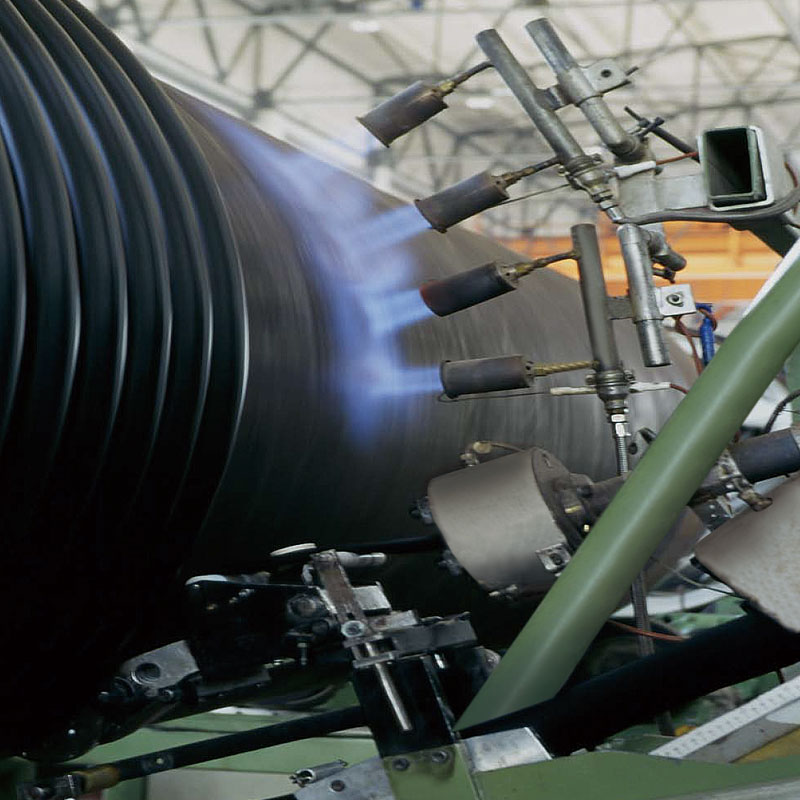The Building Blocks: Materials in Harmony with Extrusion Equipment for Type B Structural Wall Winding Pipe
2023-11-14
Introduction:
The manufacturing of Type B Structural Wall Winding Pipe is a symphony of precision, and at the core of this symphony are the materials carefully chosen for their unique properties. Extrusion equipment, the maestro in this process, conducts a harmonious dance with these materials, molding them into pipes that embody strength, durability, and versatility. In this blog post, we'll explore the key materials commonly used in conjunction with extrusion equipment for the production of Type B Structural Wall Winding Pipe.
1. High-Density Polyethylene (HDPE):
- HDPE is a stalwart in the world of pipe manufacturing. Its excellent strength-to-weight ratio, resistance to corrosion, and flexibility make it a common choice for extrusion equipment crafting Type B Structural Wall Winding Pipe. HDPE ensures a durable and lightweight end product.
2. Polypropylene (PP):
- Polypropylene, known for its chemical resistance and thermal stability, is another material frequently paired with extrusion equipment for Type B Structural Wall Winding Pipe. PP pipes exhibit resilience against harsh chemicals, making them suitable for various industrial applications.
3. Reinforcement Fibers (e.g., Glass Fiber):
- To enhance the structural integrity and strength of Type B Structural Wall Winding Pipe, reinforcement fibers such as glass fiber may be incorporated. These fibers, when combined with extrusion technology, contribute to a pipe that can withstand higher loads and pressures.
4. Composite Materials:
- Composite materials, often a combination of polymers and reinforcing elements, are gaining popularity in the production of advanced pipes. Extrusion equipment adeptly handles the integration of these composite materials, providing pipes with tailored properties for specific applications.
5. Thermoplastics:
- Extrusion equipment for Type B Structural Wall Winding Pipe frequently works with thermoplastics due to their ability to undergo repeated heating and cooling without undergoing significant degradation. This characteristic ensures that the pipe maintains its form and functionality over time.
6. Polyethylene (PE) Variants:
- Beyond HDPE, various polyethylene variants, such as MDPE (Medium-Density Polyethylene) and LDPE (Low-Density Polyethylene), may be employed based on the desired characteristics of the Type B Structural Wall Winding Pipe. Each variant offers unique properties suited for different applications.
7. PVC (Polyvinyl Chloride):
- PVC, known for its chemical resistance and durability, is a material often extruded to create pipes for various applications. While not as flexible as some other materials, PVC remains a popular choice for specific industrial and infrastructure projects.
8. ABS (Acrylonitrile Butadiene Styrene):
- ABS is a thermoplastic polymer that combines the strength of acrylonitrile, the toughness of butadiene, and the rigidity of styrene. It is sometimes utilized with extrusion equipment for Type B Structural Wall Winding Pipe, offering a balance of mechanical properties.
9. UPVC (Unplasticized Polyvinyl Chloride):
- UPVC is a rigid form of PVC that is often used for extrusion processes to create pipes with enhanced structural stability. It is resistant to chemicals and provides a smooth interior surface, making it suitable for various applications.
10. Polyethylene Terephthalate (PET):
- PET, known for its strength and transparency, is a thermoplastic polymer that may be utilized in the extrusion process for specific types of pipes. Its versatility extends its application range to various industries.
Conclusion:
The materials selected to dance with extrusion equipment in the creation of Type B Structural Wall Winding Pipe are the building blocks of innovation and durability. Each material brings its own set of unique properties, ensuring that the resulting pipes meet the stringent standards required for diverse industrial, infrastructure, and commercial applications. As extrusion technology continues to advance, so too will the possibilities for crafting pipes that stand as exemplars of strength, resilience, and adaptability.



